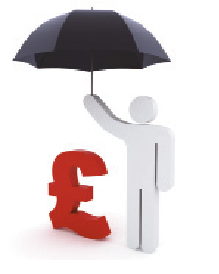
8 Steps To Avoid Market Meltdown [Ukraine crisis]
1. Decide IMMEDIATELY whether your attitude to investment risk has changed.
Most self-directed investors do not address the issue of risk very well. Partly this is because a 40-year bull market has made investors (and the investment industry itself) complacent about risk.
Most of the time your attitude to risk might be robust, and wrapped around your natural optimism – this drives your attack.
But then when you are confronted with some new facts or evidence, this can be a rude wake-up call, and one which should be taken seriously – this means re-focussing on your defence.
You must now address the following steps, which will add much greater clarity to your risk management, your defence, and definitely reduce stress.
2. You must accept the possibility that markets can go down to a level which does not fit with your life plans.
You must start with this important mental adjustment. You do not need to know when this might happen or why – just accept the possibility
You must allow for risks without precedent which, if they occur, might destroy your life plans.
Once you have acknowledged this, the following steps are much easier.
3. You must have a plan to deal with your investments falling.
Here’s why. Imagine the value of your £100,000 portfolio falls to £70,000, down 30%. You do nothing. It recovers a bit, and then falls again, now down 50%. It recovers a bit over a few months, then down again, now over 60%. This pattern repeats. It repeats over a number of years – remember The Japan Problem. Their stock market is still below the peak of 1989, and during this 30+ years suffered falls of 80%+ at worst.
How would you feel if this repeated? Your portfolio probably represents a lifetime of carefully accumulated wealth, for which you worked bloody hard.
If this is a shock you would rather not experience, you need a plan with some very specific action points. Let’s look at those now.
4. Reduce the number of your investments (whether funds or individual stocks).
A maximum of 15, but as low as possible. The more holdings you have, the harder you will find it to take action when markets fall. This next test will help you with this task…
5. Apply “The Overnight Test”, simple but powerful.
Assume someone sold all of your investments tonight without your knowledge, and tomorrow you woke up with 100% in cash. Here's the test...
You can re-purchase the same investments at no cost. Which would you re-purchase? What changes would you make?
Go practice some selling now. Practice makes perfect
6. No fund holding should have a value less than 5% of your total portfolio value.
If the value of any one fund is less than 5% of your total portfolio, it is highly unlikely to have much impact on the progress of your portfolio as a whole – so have a smaller number of fund holdings, of greater value.
7. Once extreme valuations and behaviour are evident, increase cash levels.
Ditto any other extreme risks e.g. pandemic risk. Now war risk?
8. Have a clear stop-loss strategy and make sure you apply it.
With a stop-loss you literally stop your loss from getting bigger.
For each investment, decide how far the value must fall to trigger you selling it. For example, is it 10% or 5% or 15%? We have researched this in detail, and crunched numbers over four decades. There is no perfect answer, but an effective level appears to be 10%.
Selling when values fall 5% means you continually get whip-sawed in and out of markets. In contrast, if you set the level at 15-20% or higher, you are much less likely to act on the stop-loss trigger, because the loss is too painful. 10% works well.
Write this down for each investment (fund or stock). Do this in a moment of relative calm. This is pre-commitment and makes it more likely you will act when the time comes.
FURTHER READING